The shipbuilding town of Vanport — home to most of Oregon’s blacks — was washed away in an…
The shipbuilding town of Vanport — home to most of Oregon’s blacks — was washed away in an afternoon
Ten thousand houses in 110 days, and then they were gone
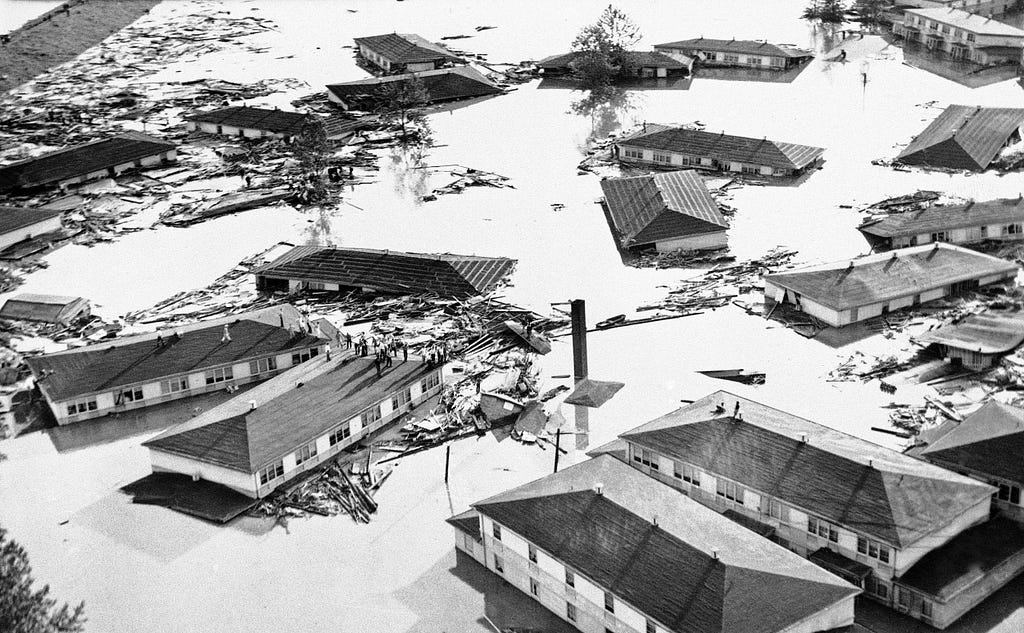
There was work. That was why the people, including many African Americans from the South, came to Oregon.
In 1940, industrialist Henry Kaiser struck a deal, at first with the British, then with the United States, to build ships at a breakneck speed along the Columbia river. Demand absorbed as many ships as the yards could produce, but housing failed to keep up with the influx of workers. Some laborers, who migrated from all parts of the country for work, slept in parks, tents, and in their cars. A solution for the boom of exhausted workers—spearheaded by Kaiser, funded by the federal government, and managed by the Housing Authority of Portland—was to become Vanport, the largest housing project in the world.
The community of Vanport was named after the two cities it sat between: Portland and Vancouver, Washington. Much like the ships built there, derisively called “Kaiser’s coffins” by some, Vanport was raised with astonishing speed. Nearly 10,000 houses and apartments were erected within 110 days.
The pace of work entailed certain compromises to quality. The wood-frame houses were built without cement foundations, and with materials inessential to the war effort. The site itself was buggy and low, situated on a swampy wedge of land between the Columbia and Willamette rivers. Residents met an unreliable supply of ice for their iceboxes, and were supplied with hot plates whose plastic knobs were wont to melt off with use. The mood and understanding among residents and officials alike was Vanport was to be a temporary dwelling.
When it was christened on December 12, 1942, Vanport became the second biggest city in Oregon, with a peak population of 42,000. Though never intended to be a permanent settlement, its sheer size allowed it to take on homelike amenities, including a hospital, fire and police services, a movie theater, and its own school system. The schools of Vanport were the first in the state to employ black teachers, and black and white students learned and socialized together. It wasn’t perfect. “There was discrimination,” recalled Charles Sutton, a white resident who grew up in Vanport, “but there was always a white kid that stuck up for them.” To this day, former residents of the town affectionately recall the supportive and encouraging environment of the Vanport school system.
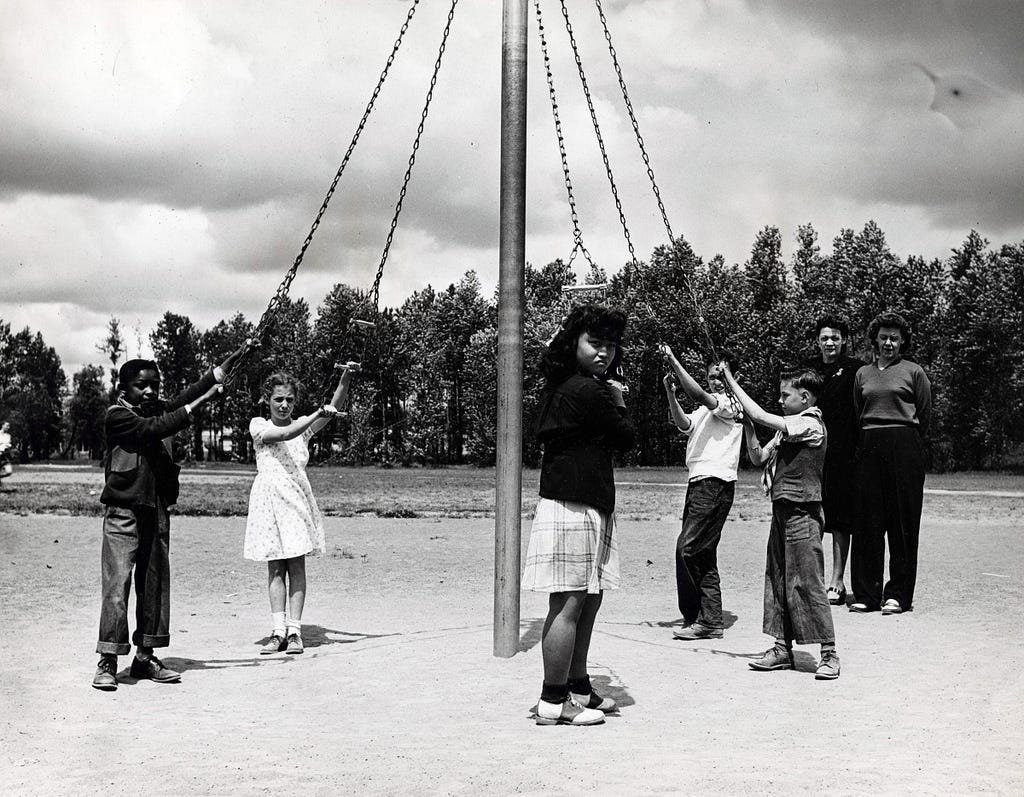
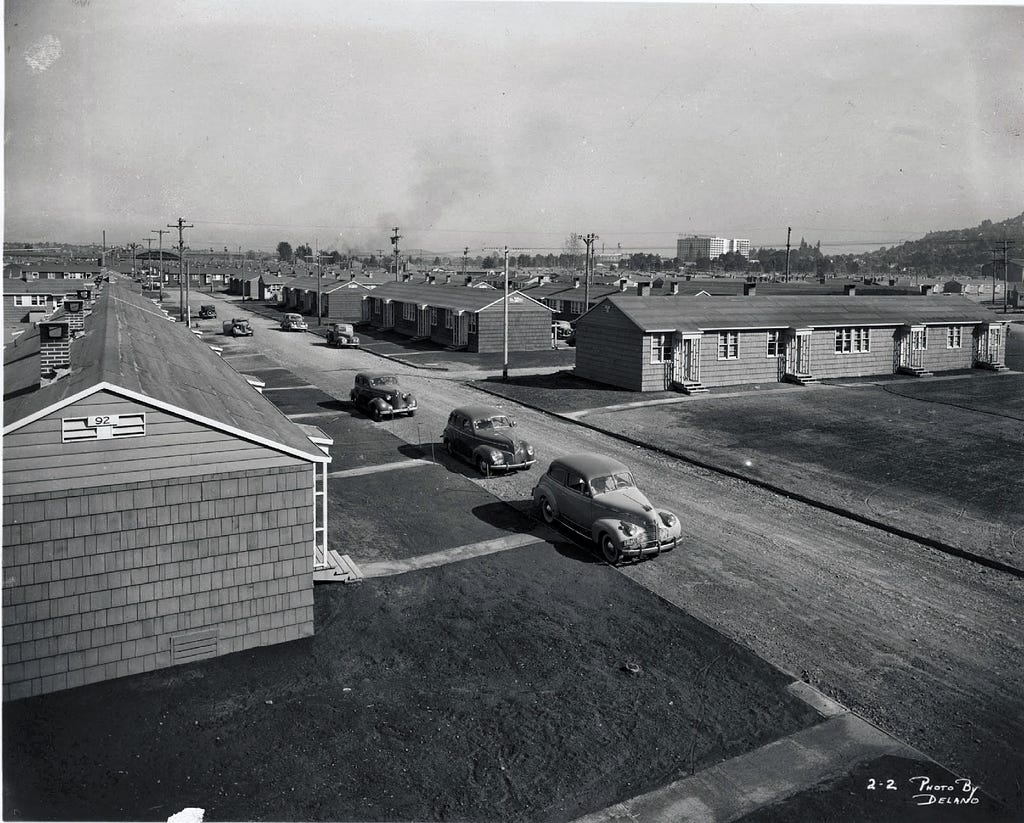
Vanport also boasted a 24-hour child care service. Praised by Eleanor Roosevelt, the preschool care system corresponded to the round-the-clock demands of the shipyards, which through the night glowed with floodlights and welding torches. With labor near at hand, Kaiser Shipyards were able to construct a ship in fewer than 30 days. In one exceptional instance, the Joseph Teal was built in only ten.
While the unity of the wartime effort weakened the racial divide and gave new-found opportunities to women and people of color, Vanport was far from being some ragtag utopia. The city was segregated, with whites living in certain areas, and blacks, consisting of around 20 percent of the population, living in others. Portland, a city still known for its minimal racial diversity, looked on with anxiety as nearby Vanport began to fill up with black shipbuilders. Mayor Earl Riley warned that “Portland can absorb only a minimum number of Negros without upsetting the city’s regular life.”
This racist NIMBYism was ingrained in the state’s DNA. When Oregon joined the union in 1859, it was the only state to constitutionally prohibit black people from living, working, or owning property there. The Klan developed a significant presence in the city, and the group became a staple of the political community. When time came for the establishment of Vanport, rising racist sentiment had driven out half of Oregon’s black population, leaving only about 1,500 African Americans.
The influx of black workers, many migrating from the South, essentially tripled the existing African American population. Jobs paid decently, around 80 cents to $1.50 an hour, and the Kaisers beckoned workers with national newspaper advertisements. Herman Brane moved to Vanport with his family as a child. “In Portland, Oregon, you could get a racial slur, but in the Deep South you could get lynched,” he said, reflecting on his father’s decision to find work in the shipyards. “He was looking at it in a kind of relative sense.”
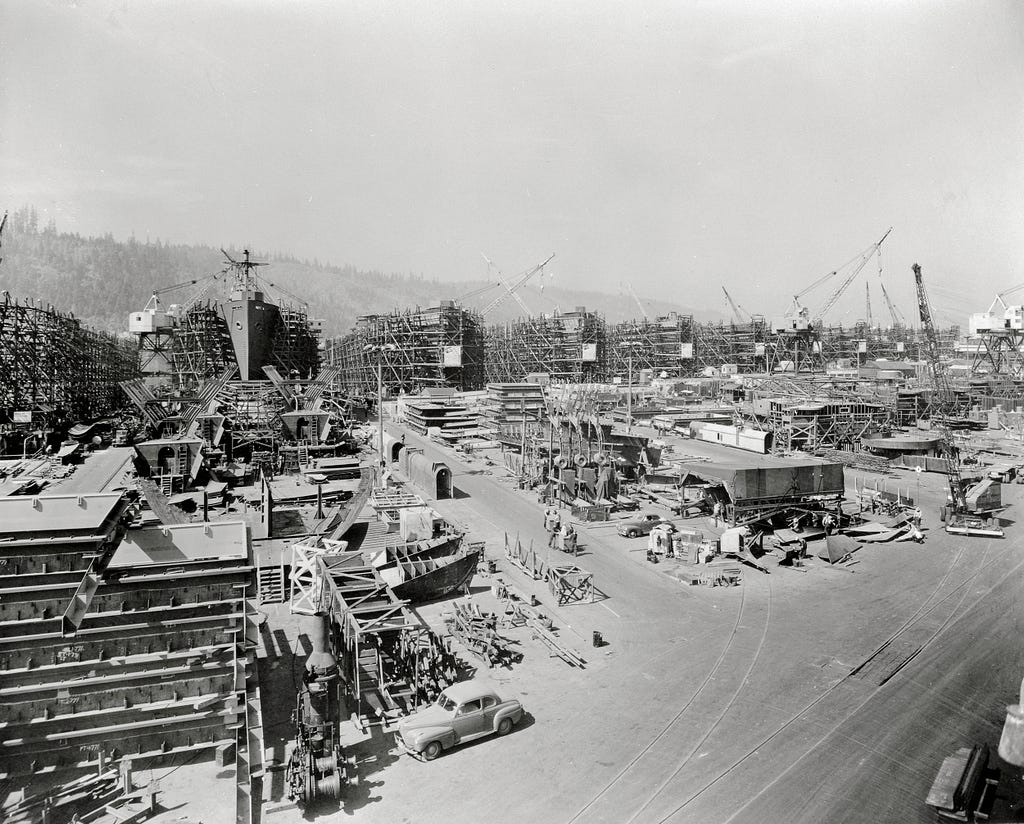
When the war ended, the shipbuilding industry naturally diminished. Many of Vanport’s white residents moved out, but some stuck around through the postwar years, including the still-employed, poorer white residents, college students, as well as black residents, who were barred from settling in central Portland because of redlining.
In 1948, the year Vanport would be more or less wiped from the map, the town held a population of 18,500, around 6,300 of whom black. The spring of 1948 saw a severe rainy season, combined with late snowmelt, causing waters to rise in the Columbia river basin. Officials told residents not to worry, and that the dikes would hold back the water. Close to the breaking point, they put a notes under residents’ doors, reading:
REMEMBER:
DIKES ARE SAFE AT PRESENT
YOU WILL BE WARNED IF NECESSARY
YOU WILL HAVE TIME TO LEAVE
DON’T GET EXCITED
Planes flew overhead Vanport on Sunday, May 30. At 4:17 p.m. that day, a 30-year-old railway mound that doubled as a dike was breached by the swelling waters.
The waters rushed forward. Sirens sounded, giving residents a ten minute warning before the overflowing rivers flooded the community of Vanport. Housing units were lifted from their meager foundations and cast against each other. Some splintered and broke, creating pockets of debris and houses in the floating water. That the houses were so buoyant probably saved lives, as occupants were later rescued from roofs and upper levels of homes.
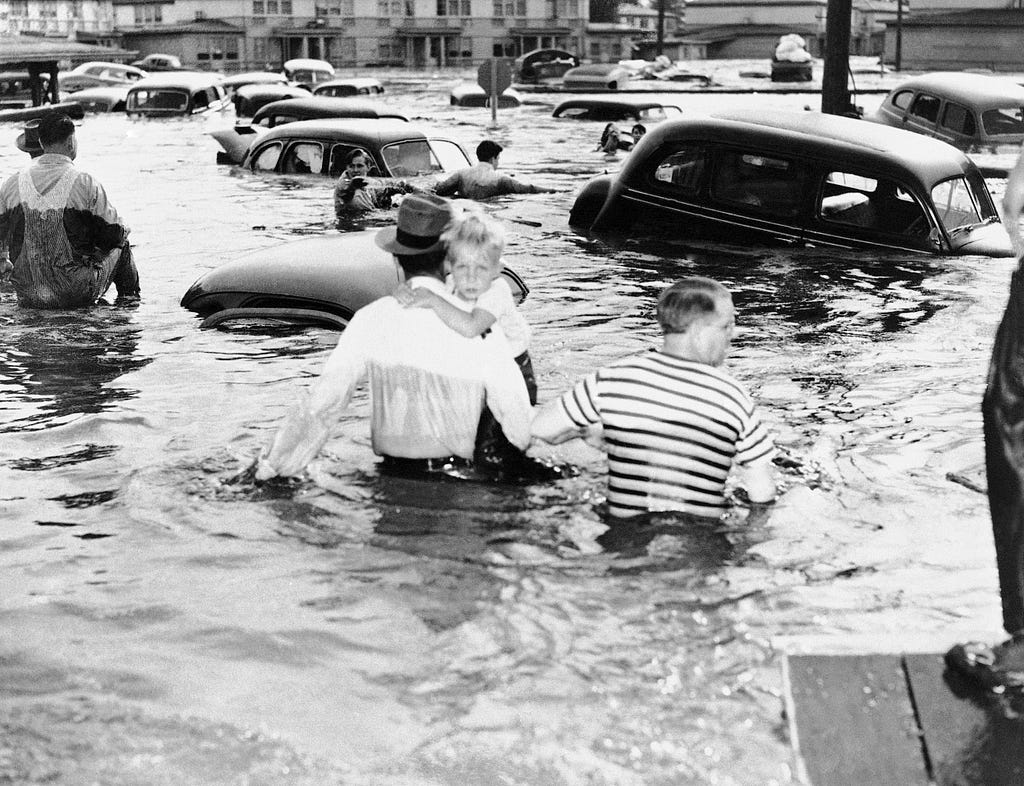
A public hysteria followed after, with rumors suggesting a massive death toll, that authorities conspired to cover up. Less reputable newspapers said hundreds were killed, and some residents claimed to have witnessed a bounty of floating corpses. More creative tales had it that the Housing Authority of Portland had secretly disposed of the innumerable dead, shipping them off to Japan or storing them in an ice and freezing facility downtown. All told, 15 sets remains were were officially recovered, with seven more reported missing.
“Mr. Truman had inspected on foot the tragedy of Vanport,” said The New York Times, calling it “the town that is no more.” The president signed a $10,000,000 relief bill to citizens affected by the flood across Oregon, Washington, and Idaho. In the aftermath, private acts of kindness followed as residents of Portland opened their homes to the sudden refugees, initiating a grieving and recovery process that broke down racial barriers.
African Americans who managed to stay in Oregon settled in the Albina area of northern Portland, where they created a community of their own. “Vanport started the process that we are seeing the conclusion of today,” remarked Dr. Darrell Millner of Portland State University. “In between what we saw was a complicated evolution of interactions, sometimes with race as the most important factor, sometimes with economics as the most important factor, that transformed the city of Portland.”
Today—on the former site of the community that came up as quickly as it was washed away—is a racetrack, a golf course, and wildlife preserve.
The shipbuilding town of Vanport — home to most of Oregon’s blacks — was washed away in an… was originally published in Timeline on Medium, where people are continuing the conversation by highlighting and responding to this story.
Powered by WPeMatico


